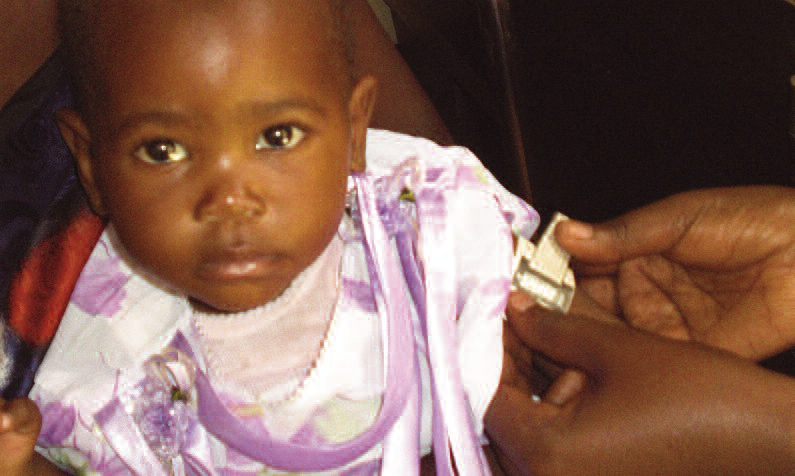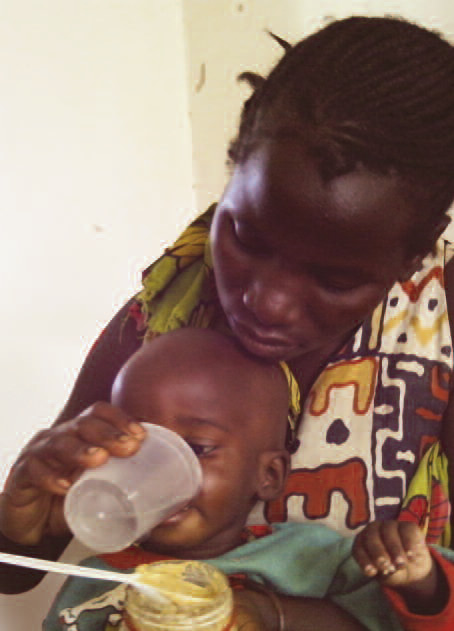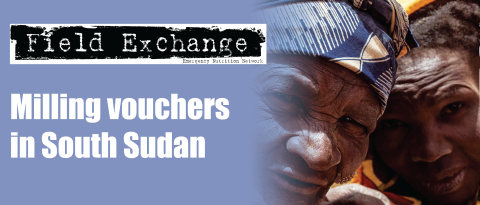Comparison of milk free v milk containing RUTF in SAM treatment in Zambia
Summary of published research1

Location: Zambia
What we know: Global SAM treatment relies on internationally produced RUTF that is expensive. RUTF formulations that exclude the milk ingredient (that is often unavailable and is expensive) and that use locally available foods may increase access to treatment.
What this article adds: The effectiveness of a soy-maize-sorghum based RUTF formulation using local ingredients was compared to a peanut/milk-based RUTF in an urban outpatient setting in Lusaka, Uganda. Overall, the recovery rates were higher with the peanut/milk based RUTF but the study was inconclusive. Results suggested that the soy-maize-sorghum RUTF might be inferior to peanut/milk-based RUTF for children <24 months but not so for children ≥24 months. The study was limited by external factors contributing to higher default and death rates in an already challenging urban programme.
A recent study set out to compare the equivalence of a milk-free soy-maize-sorghum-based ready-to-use therapeutic food RUTF) to standard RUTF. To date, the internationally accepted RUTF has been made from peanut paste, dried skimmed milk, oil, sugar and mineral vitamin mix largely made in France. The use of this peanut/milk-based RUTF (P-RUTF), coupled with increasing access to CMAM services, has been associated with high recovery rates, lower case fatalities and greater weight gain of children with SAM.
A number of factors limit availability of P-RUTF to those who need it, particularly cost (P-RUTF is an expensive $3.50–$4.00 per kg, milk powder accounts for 50% of costs), lack of locally produced milk powder where SAM is prevalent, and difficulty meeting US aflatoxin standards for locally produced peanuts. These factors increase costs, working capital requirements and the lead times for RUTF manufacture and procurement. A new RUTF formulation is required that can be manufactured more safely and cheaply manufactured in the countries where it is needed, using locally available foodstuffs such as legumes/pulses (e.g. soybean, chickpea, lentils) and grains (e.g. rice, maize, sorghum, millet), and limiting or eliminating the milk content.
A newly published study tested the effectiveness of a new RUTF formulation [soy–maize–sorghum-based (SMS)-RUTF] for the outpatient treatment of SAM without complications. The SMS-RUTF was made in Kenya from soya, maize, sorghum, oil, sugar and a mineral vitamin mix and contained no milk powder or peanuts. At the time of the study, using Kenyan market prices, the cost of ingredients for producing one metric ton of SMS-RUTF was USD $1,583 compared to an ingredients costs of USD $2,393 for one ton of P-RUTF.
Study method
The study was conducted between June 2009 and August 2010 in the health care (HC) clinics run by the Lusaka District Health Management Team in Lusaka, Zambia. Study eligibility required a clinic to have HC status, have a well-established outpatient therapeutic programme (OTP) that had been running for at least 6 months and have already treated a caseload of over 100 SAM children. Twenty-four of the 26 HCs met the criteria, were recruited and completed the study. This was a non-blind, parallel group, cluster randomised equivalence trial with the randomisation to either SMS-RUTF or P-RUTF arms occurring at the level of the HC. The study could not be blind because of product differences in packaging and taste. The cluster design was chosen to try to address the risk that caregivers and health workers would be biased in favour of the already well-known P-RUTF.
All children were aged between 6 and 59 months and had been diagnosed with SAM without complications after presenting to one of the 24 HCs. The diagnostic criteria for SAM was a mid-upper arm circumference (MUAC) <11.0 cm or pitting oedema of grade 1 (+) or 2 (++). Complications were defined as either medical (using the World Health Organisation’s (WHO) Integrated Management of Childhood Illness (IMCI) standard definitions) or the absence of appetite (15 min appetite test), determined by a trained nurse. Children with SAM who presented with complications were referred to one of the four inpatient stabilisation units (SC) and were not eligible for this study. All other SAM cases were admitted to the OTP and included in the trial. Children previously discharged from the study with a recovered outcome that later relapsed and presented again at the one of the participating HCs with a new episode of SAM were not eligible for enrolment in the study a second time.
Stratified cluster randomisation was used to allocate the 24 HCs into intervention (SMS-RUTF) and control (P-RUTF) arms (12 each). Children who initially accepted the SMS-RUTF but subsequently refused were transferred to the P-RUTF. These children were kept in the SMS-RUTF group for the intention-to-treat analyses (ITT) but were excluded from the sample for the per protocol (PP) analyses.
All enrolled children received a 5-day course of amoxicillin, a single 100 mg dose of mebendazole, a 1 week ration of RUTF and health and nutrition advice. The RUTF ration was calculated to provide 200 kcal/kg/day. All children were asked to return to the HC for a follow-up visit once a week until they were discharged from the programme. At each follow-up visit, MUAC, oedema and weight were recorded and the children were screened for medical problems and appetite. Caregivers were interviewed at each visit about the acceptability of the RUTF and a repeat one week ration of RUTF was provided at the same dosage rate. Children were also asked about whether they had eaten an RUTF formulation other than the one to which they had been allocated.
Outcomes
Children exited the study in one of five ways: recovery (cure), death, default, transfer out of the catchment area and non-recovery. For children admitted with a MUAC <11.0 cm, recovery was defined as a weight gain of at least 18% and MUAC >11.0 cm and no medical complication and the absence of bilateral pitting oedema. In the case of children admitted because of bilateral pitting oedema, recovery was defined as the absence of bilateral pitting oedema, and clinically well and a MUAC >11.0 cm.
A child was considered to have defaulted if absent for three consecutive visits. Defaulters were followed up and invited back into the programme by trained volunteers and those who returned were given a new outcome based on their status when they exited the programme. At the end of the study, all remaining defaulters were traced and classified as alive, dead or in the case of those not found, as lost-to-follow-up (LTFU).Verbal autopsy to confirm death and to assess the possible cause of the death was undertaken for children who were reported as having died. Children whose condition deteriorated in the course of the outpatient treatment were referred to a SC (inpatient). Once stabilised, the children returned to the HC to complete their treatment and an outcome was allocated based on their exit status from the OTP. Those children who died in a SC were given an outcome status of ‘death’. Those who remained in a SC until they met the recovery criteria or were still in the SC at the end of the study period were given an outcome status of ‘not returned from inpatient’.
 SMS-RUTF ingredients
SMS-RUTF ingredients
All the main ingredients for SMS-RUTF preparation, (soybean, maize and sorghum) were whole, non-defatted, non-dehulled grains/seeds and were processed based on an extrusion cooking technique. The level of some of the SMS-RUTF nutrients was higher than United Nations RUTF specifications to compensate for the increased levels of anti-nutrients present in the plant-based ingredients. The iron content was increased to compensate for iron absorption inhibitors including phytic acid and polyphenols and also because it has been shown that the current P-RUTF formulation may increase the risk of anaemia during rapid catch-up growth. The level of iron fortification used was also guided by the WHO recommendations of 100 mg of ferrous sulphate for 1000 kcal for the fortification of therapeutic milk F100. The zinc content was increased in accordance with WHO recommendations on micronutrient fortification in food with phytic acid to ensure that the molar phytic acid/zinc ratio remained close to that of the P-RUTF. The content of niacin was increased because the current specification is for RUTF containing milk and milk is a substrate that can be used to synthesise niacin in vivo, a metabolic route not available when a non-milk SMS-RUTF is used. The SMS-RUTF was packaged in 250 g clear plastic screw top pots and the P-RUTF in 92 g, branded, laminated foils sachets.
Sample size
To calculate the sample size, equivalence was defined as being when the recovery rates of SMS-RUTF and P-RUTF were within the 10% margin of equivalence. The calculation was premised on the study being implemented in 24 HCs with 12 unequal sized clusters per arm and an intra-class correlation (ICC) coefficient of 0.02. Based on the analysis of Lusaka CMAM data from the two years immediately preceding the study, we assumed a recovery rate of >80% for P-RUTF and a 10% loss to follow-up. With this margin, we expected the two RUTFs to have a minimum recovery rate of equal or superior to the internationally set SPHERE standard cut-off of 70%. To demonstrate equivalence at a 5% significance level and with an 80% power, 1,604 children equally divided between the two arms were required.
Results
A total of 2,462 children were screened, of whom 1927 were eligible and consented for study enrolment while 535 were ineligible. The eligible children received either P-RUTF (n = 1103) or SMS-RUTF (n = 824) based on the HCs they attended for treatment.
Overall, the recovery rate in the SMS-RUTF was lower than the recovery rate in the P-RUTF group.
- In the ITT analysis, the recovery rates were 60.8% in the P-RUTF arm and 53.3% in the SMS-RUTF arm, with an adjusted risk difference (ARD) of -7.6 [95% confidence interval (CI) –14.6, -0.6]%. The death rate was 12.5% v 13.7%, defaulter rate 25.2% v 28.3% and non-responders rate 0.9% v 1.2% for P-RUTF and SMS-RUTF arms respectively.
- In the PP analysis, the recovery rates were 81.9% in the P-RUTF arm and 78.1% in the SMS-RUTF arm, with an ARD of -3.8 (95% CI-10.2, 2.6)%. The death rate was 16.8% v 19.8% and non-recovered rate 1.2% v 1.7% for P-RUTF and SMS-RUTF arms respectively.
- The ICC for the ITT and the PP were 0.015 and 0.008, respectively. However, in terms of the equivalence margin of >10% set in the study design, the results are inconclusive as the 95% CI for the observed recovery rates overlap this equivalence margin (the lower limit of the zone of equivalence) for both the ITT and the PP analyses.
The subgroup analysis demonstrated an interaction between the age group and recovery rate (interaction P <0.001 for ITT analyses and 0.0683 for PP analyses):
- The ARD and CIs for recovery rates for children >24 months of age at enrolment showed that the recovery rate in the SMS-RUTF arm was lower than the recovery rate in the P-RUTF in both the ITT (ICC = 0.017) and PP (ICC = 0.004) analyses. By contrast, in children 24 months at enrolment, the recovery rate in the SMS-RUTF arm was higher than the recovery rate in P-RUTF arm. In both these age groups, this study is again inconclusive as to whether the two RUTF were equivalent with respect to recovery rates.
In children below 24 months of age, the 95% CI for the observed effects overlaps the equivalence margin at the lower limit of the zone of equivalence. For children aged 24 months or above at enrolment, the 95% CI for the observed effects overlap the equivalence margin at the upper limit of the zone of equivalence. The results for the mortality, default and non-recovery rates demonstrated no difference between the two study arms. - Children in the SMS-RUTF arm had a lower weight gain than those in P-RUTF arm (P = 0.007) in both oedematous (P = 0.018) and non-oedematous (P = 0.091) cases. There was no statistically significant interaction between weight gain and any other baseline variable.
- The median length of stay for children recruited into the P-RUTF arm was 35 days (IQR, 23–49 days) and for SMS-RUTF it was 35 days (IQR, 21–56), (Kruskal–Wallis: X1 2 = 0.476, P = 0.494). For those who were discharged as recovered, the median length of stay was 35 days (IQR, 28–52) and 47 days (IQR, 29–70) for those in P-RUTF arm and those in the SMS-RUTF arm, respectively (Kruskal–Wallis: X12 = 34.69, P <0.001).
Discussion
Overall recovery rates, the primary outcome for this study, were higher in the P-RUTF than in the SMS-RUTF arm but the study was inconclusive and did not confirm our hypothesis of equivalence between the two different RUTFs in the treatment of SAM. However, there was evidence of a possible heterogeneity of treatment effect between children <24 months and those ≥24 months, with a suggestion that although the SMS-RUTF might be inferior to P-RUTF for children <24 months, this might not apply to children aged >24 months.
This was an effectiveness study implemented as part of the routine operations of a primary health care programme treating SAM and the results need to be interpreted in the context of the difficult and unpredictable urban environment within which the study was carried out. A number of external factors increased the risk of default and death while at the same time decreased the ability of the staff to manage the programme and trace defaulted children. The resultant negative impact meant that both study arms suffered similarly high default rates and neither the P-RUTF nor the SMS RUTF attained a recovery rate of 75%, the level considered acceptable for CMAM services. This is very different to the 3 years that preceded the study, when the defaulter rate of the Lusaka CMAM programme was below 20% and the mortality rate was below 5%. The PP analysis suggests that in the absence of this increased defaulter rate, the recovery rate for both the RUTFs would likely have been above 70%.
Despite the non-equivalence in recovery rates in the overall study result, the researchers believe that the similar mortality rates in each arm, the 70% recovery rate and the equivalence to P-RUTF observed in the PP analysis for children above 23 months, merit further investigation. However, those receiving P-RUTF had higher rates of weight gain and reduced length of stay compared to those receiving SMS-RUTF. This decreased the total quantity of P-RUTF required to achieve a cure, offsetting some of the advantages of using the cheaper SMS-RUTF product. Future studies on the public health impact of new RUTF recipes should include a comprehensive cost effectiveness analysis to assess the relative importance of the different cost parameters.
1Irena. A et al (2013). Comparison of the effectiveness of a milk-free soy-maize-sorghum-based ready-to-use-therapeutic food with 25% milk in nutrition management of severely acutely malnourished Zambian children: an equivalence nonblinded cluster randomised controlled trial. (2013).


